Front Brake Caliper Replacement Dayton-Walther 6500,7500,8500,FM6/FS7
Removal Procedure
- Apply the parking brake.
- Block the wheels.
- Remove about 2/3 of the brake fluid from the master cylinder reservoir.
- Raise the vehicle. Support the vehicle with safety stands. Refer to Lifting and Jacking the Vehicle .
- Remove the tires and wheels. Refer to Tire and Wheel Removal and Installation .
- Remove the brake caliper retainer bolt.
- Remove the brake caliper retainer and brake caliper spring using a brass punch.
- Compress the pistons using a C-clamp between the inner brake caliper housing and the outer brake pad.
- Compress the pistons using screwdrivers to pry between the outer brake caliper housing and the outer brake pad.
- While compressing the pistons, watch the reservoir for possible brake fluid overflow.
- Disconnect the brake hose.
- Cap or tape the brake hose fitting in order to prevent contamination.
- Remove the brake caliper.
Important:
• Do not completely drain the master cylinder reservoir. • Drain the fluid from the brake caliper bleeder valve. • Drain the fluid into a suitable container. Discard the fluid.
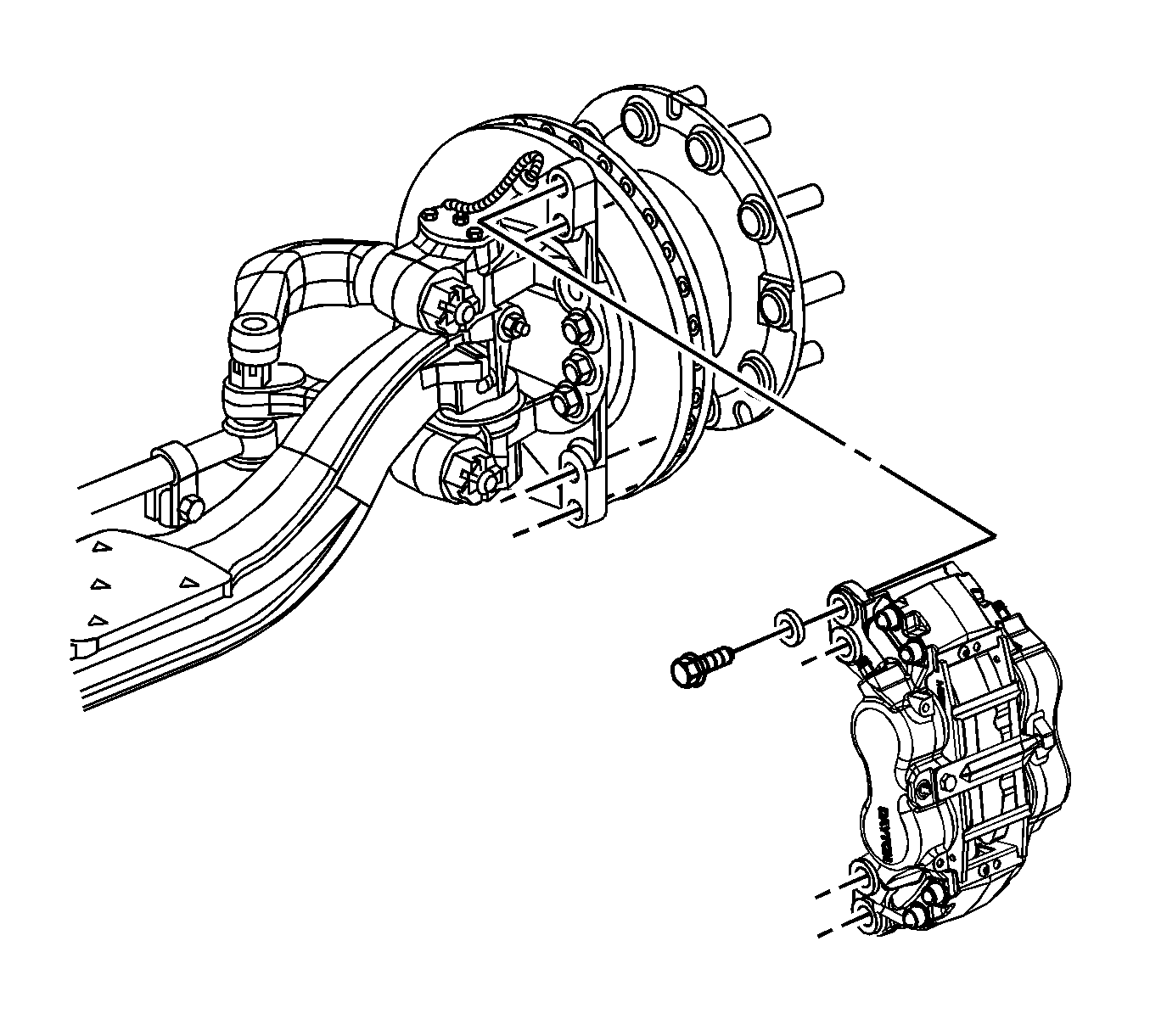
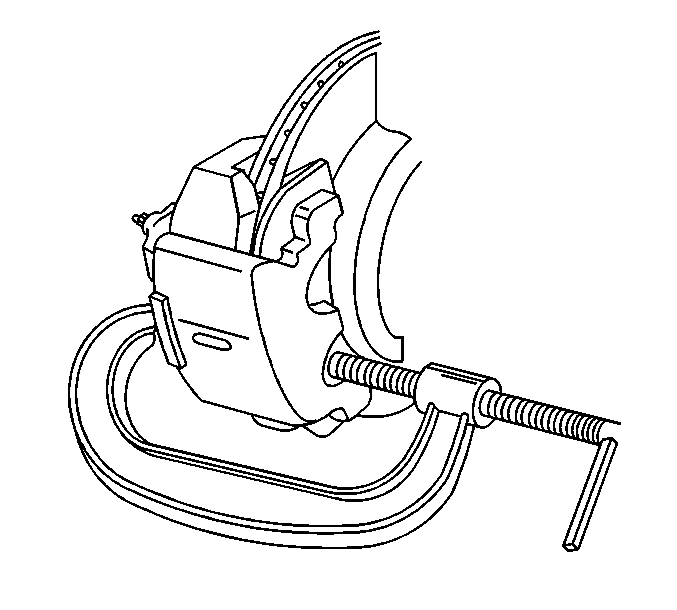
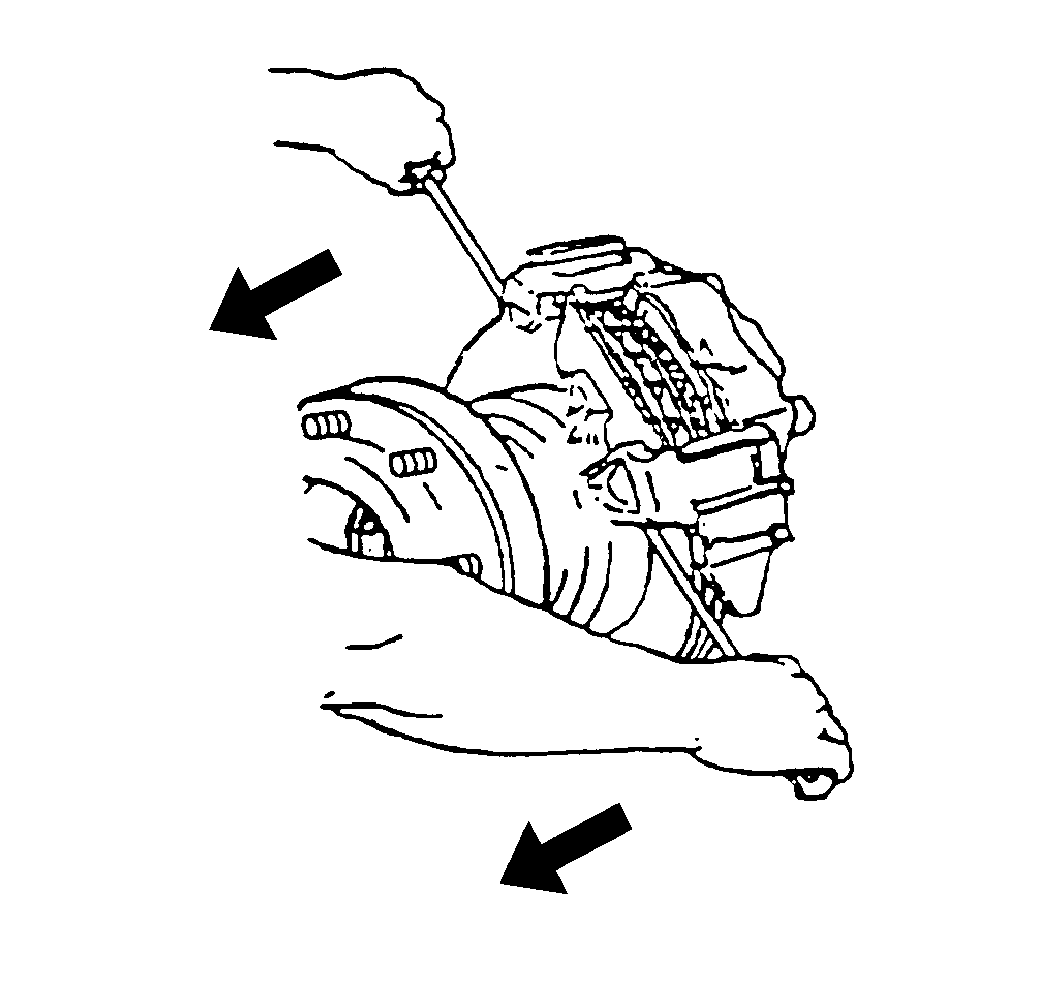
Notice: Do not allow calipers to hang from the flexible hoses. Doing so can damage the hoses.
Inspection Procedure
- Clean the area around the brake hose on the brake caliper. Use Brake Parts cleaner GM P/N 12345754 or the equivalent.
- Inspect the support rail surfaces on the brake caliper.
- Inspect the support rail surfaces on the brake caliper mounting plate.
- Inspect the heat shields. If the heat shields are loose, replace the shields.
Caution: Refer to Brake Dust Caution in the Preface section.

Installation Procedure
- Clean the support rail surfaces of the brake caliper with a wire brush. File smooth any deep nicks or gouges.
- Clean the support rail surfaces of the brake caliper mounting plate with a wire brush. File smooth any deep nicks or gouges.
- Apply a thin coat of Brake Caliper Lubricant GM P/N 12377969, or equivalent, to the brake caliper support rail surfaces.
- Apply a thin coat of Brake Caliper Lubricant GM P/N 12377969, or equivalent, to the brake caliper mounting plate support rail surfaces.
- Fully compress pistons into the caliper.
- Install the brake caliper.
- Install the brake hose.
- Loosely assemble the brake hose nut to the brake caliper.
- Loosely assemble the brake hose bracket to the brake caliper.
- Install a NEW brake caliper retainer bolt.
- Fill the master cylinder reservoir with brake fluid. Use Brake Fluid GM P/N 1052535, or equivalent. Refer to Master Cylinder Reservoir Filling .
- Bleed the hydraulic brake system. Refer to Hydraulic Brake System Bleeding .
- Pump the brake pedal several times in order to ensure that the pedal is firm and the brake linings are adjusted.
- Install the tires and wheels. Refer to Tire and Wheel Removal and Installation .
- Lower the vehicle. Refer to Lifting and Jacking the Vehicle .
- Remove the wheel blocks.
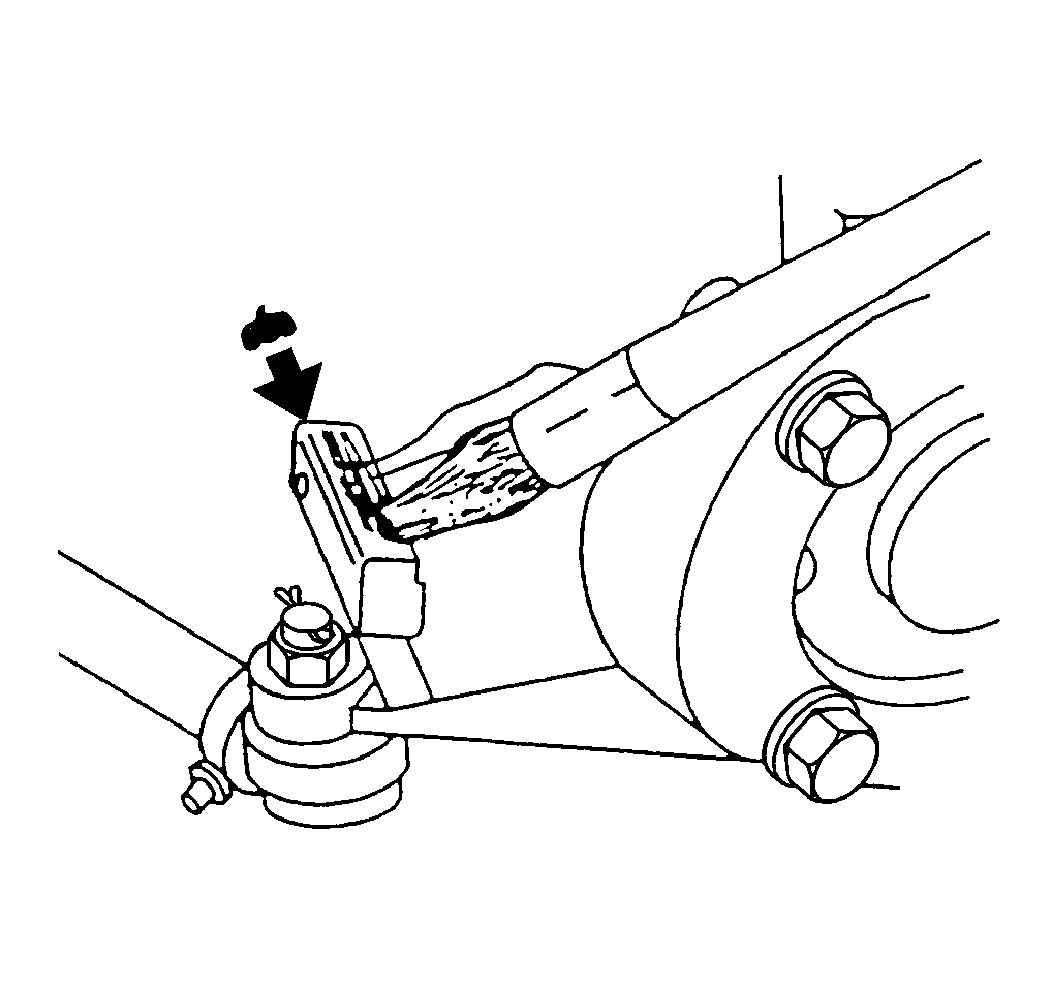
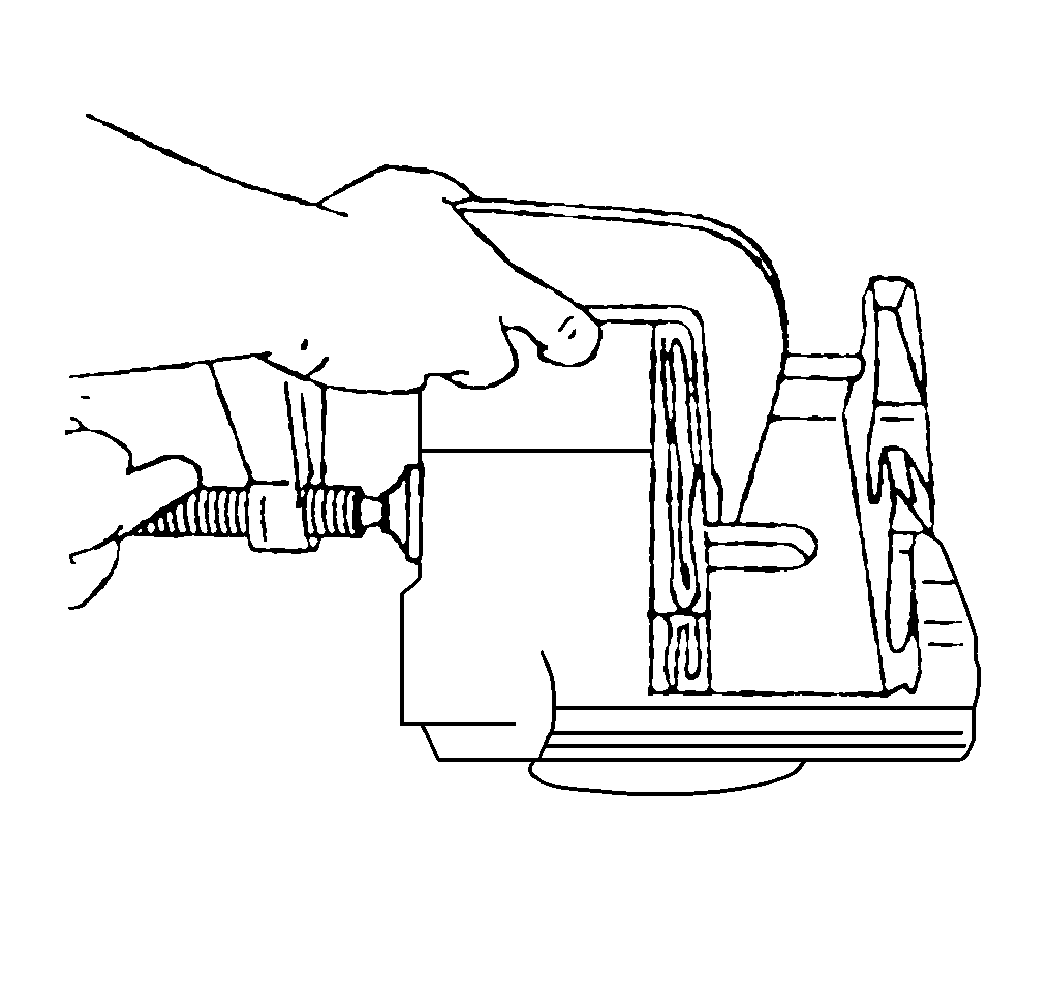

Notice: Refer to Installing Hoses without Twists or Bends Notice in the Preface section.
Notice: Refer to Fastener Notice in the Preface section.
Tighten
| • | Tighten the brake hose nut to 19 N·m (14 lb ft). |
| • | Tighten the brake hose bracket bolts to 32 N·m (24 lb ft). |
Important:
• The brake caliper retainer bolt boss must fit in the circular hole in the brake caliper retainer. • Do not reuse the brake caliper retainer bolt .
Tighten
Tighten the brake caliper retainer bolt to 450 N·m (332 lb ft).
Important: Check the fluid level in the master cylinder reservoir after pumping the brake pedal.
